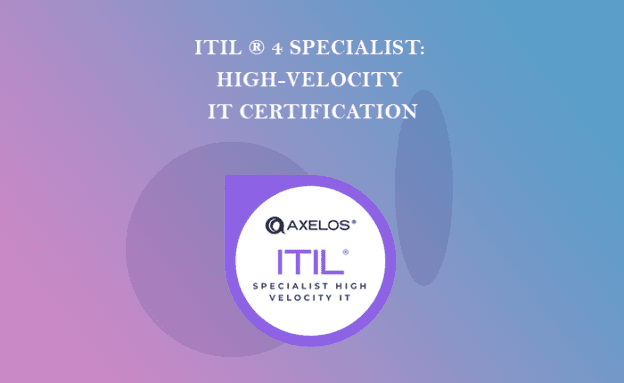ITIL ® 4 Specialist: High-velocity IT Certification Training

About Course
The ITIL® 4 Specialist: High-velocity IT Certification validates proficiency in leveraging ITIL practices to enable digital transformation and high-velocity delivery. It covers key areas such as agile and lean approaches, automation, continuous integration/continuous delivery (CI/CD), and digital product management. Aimed at IT professionals and leaders, it demonstrates expertise in accelerating service delivery, enhancing agility, and driving innovation within organizations. This certification enhances career prospects in IT service management, digital transformation, and strategic IT leadership, equipping professionals to lead initiatives that optimize IT operations and align with business objectives in fast-paced and dynamic environments.
Course Content
Module 1- Understand the following terms:
-
Digital organization
-
High velocity IT
-
Digital transformation
-
IT transformation
-
Digital products
-
Digital technology
Module 2- Understand when the transformation to high velocity IT is desirable and feasible
Module 3- The five objectives associated with digital products – to achieve
Module 4- Understand how high velocity IT relates to
Module 5- Understand the following concepts:
Module 6- Know how to use the following principles, models and concepts
Module 7- To contribute to
Module 8- Know how the service provider ensures valuable investments are achieved
Module 9- Know how to use the following practices to contribute to achieving valuable investments
Module 10- Know how the service provider ensures fast deployment is achieved
Module 11- Know how to use the following practices to contribute to achieving fast deployment
Module 12- Know how the service provider ensures resilient operations are achieved
Module 13- Know how to use the following practices to contribute to achieving resilient operations
Module 14- Know how the service provider ensures co-created value is achieved
Module 15- Know how to use the following practices to contribute to achieving co-created value with
Module 16- Know how the service provider ensures assured conformance is achieved
Module 17- Know how to use the following practices to contribute to achieving assured conformance
Earn a certificate
Add this certificate to your resume to demonstrate your skills & increase your chances of getting noticed.

